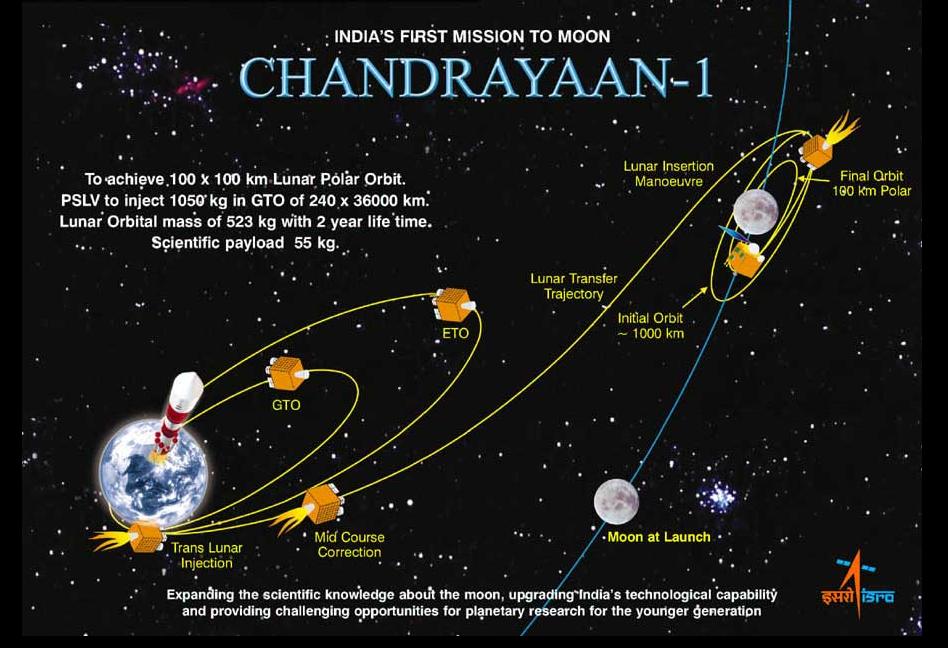


CHANDRAYAAN -1. INDIA'S FIRST SCIENTIFIC MISSION TO THE MOON.
Chandrayaan-1 was launched on 22 October 2008 at 6.22 am IST from Satish Dhawan Space Centre , Sriharikota, Nello using ISRO's 44.4 metre tall four-stage PSLV launch rocket, ...
Chandrayaan-1,, lit: Moon-traveller, or moon vehicle
The mission was a major boost to India's space program,as India researched and developed its
own technology in order to explore the Moon.
On 14 November 2008, the Moon Impact Probe separated from the Chandrayaan orbiter at 20:06 a
nd struck the south pole in a controlled manner, making India the fourth country to place it
s flag on the Moon. The probe eject underground soil that could be analysed for the presence of lunar water ice.
The estimated cost for the project was Rs. 386 crore (US$ 80 million).[12]
It carried high resolution remote sensing equipment for visible, near infrared, and soft and hard X-ray frequencies. Over a two-year period, it was intended to survey the lunar surface to produce a complete map of its
chemical characteristics and three-dimensional topography.
After suffering from several technical issues including failure of the star sensors and poor
thermal shielding, Chandrayaan stopped sending radio signals at 1:30 AM IST on 29 August 2009 ISRO officially declared the mission over. Chandrayaan operated for 312 days as opposed to the intended two years but the mission achieved 95 percent of its planned objectives. Among its many achievements was the discovery of the widespread presence of water molecules in lunar soil.
Chandrayaan-1 detected water molecules on the moon surface. This was confirmed on September 24, 2009, when Science Magazine reported that NASA's Moon Mineralogy Mapper on Chandrayaan-1 has detected water on the moon.
Chandrayaan-2
ISRO is also planning a second version of Chandrayaan named Chandrayaan II. According to ISRO
Chairman G. Madhavan Nair, ISRO hopes to land a motorised rover on the Moon in 2012, as a part of its second Chandrayaan mission. The rover will be designed to move on wheels on the lunar surface, pick up samples of soil or rocks, do on-site chemical analysis and send the data to the mother-spacecraft
Chandrayaan II, which will be orbiting above. Chandrayaan II will transmit the data to Earth."



No comments:
Post a Comment
please Comment